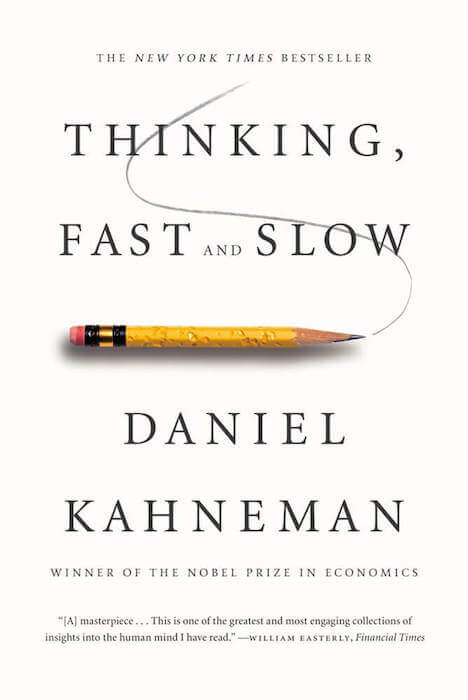Instead of just marketing new ideas to people, market ideas connected to their unique story.

In a hurry? No problem. Scroll to the bottom for punchline takeaways from this article.
Think about a time when you were feeling…
- Joy
- Pride
- Frustration
- Hope
Pretty easy to remember.
Now see if you can remember a time that you…
- Read a white paper
- Saw a chart full of numbers
- Read the top 10 of anything
- Filled out an Excel sheet
Not as easy, is it?
While your main goal as a marketer is to convince people to buy your product, you also need to stay on the top of their minds when the need for it arises. Following the psychology of how the human brain works, you have to learn how to craft marketing stories that are memorable to your users.
Answering the questions above, you can see that memory tied to a feeling is much easier to retain rather than one tied to a number.

When it comes to retaining data, our memory is not effective. This can suck for marketers because numbers are a big part of the value proposition for companies. Whether it’s profit, time savings or cost savings, the truth is that most people can’t remember a statistic unless it’s tied to an emotional reaction. So how can you talk about these stats in a memorable way?
People will remember a statistic if it…
- Makes themselves look good
- Validates their opinion
- Helps them make smarter decisions
Why? Because it fits their narrative. We’re prideful creatures, so any information that empowers us in what we already know causes us to feel.
According to cognitive psychologist Carmen Simon, one best practice for being memorable is to insert your messaging into the user’s daily habits. That can be Kit Kats inserting their product into the habit of the coffee break or any brand placing their content into a user’s daily habit of scrolling through Facebook.
Finding a way to identify your users habits (their story) and integrate your messaging into it is a very effective strategy in your marketing.
It’s Not About You, It’s About Them
If you read a case study that showcases a success of another company, it might evoke some shock or interest. But if it’s you can imagine your company with the impressive numbers, there’s more memorable emotions that pop in – joy, excitement, or pride.
Quick Tip! In order to help the user envision themselves with successful numbers, provide an ROI calculator or tool at the end of your case studies so they can see the potential impressive numbers for their company.
When you tell a story in marketing, it needs to be the customer’s story. They won’t remember your story, because they have no emotional stake in it. Sure, it might be a spot-on representation of your brand. But to be honest, users care more about themselves.
Marketers also make the assumption that users are thinking “Well, what can you do for me?” While consciously they may be saying that, what it really means is “What can you do that will help me do something great for me?” In other words, “how can you help me improve my life?”
You need to be arming your prospects with the right tools and resources to accomplish something that makes them proud of themselves. If you can position their success in a way that they can take the credit, then you’ve done your job.
Your Customer Is the Hero
The “hero’s journey” is a very common model for successful storytelling, especially in marketing.

Spoiler Alert! If you understand the hero’s journey from top to bottom, it will probably ruin the endings for a lot of movies you watch, so tread lightly!
Robert Rose does an excellent job breaking down each step of the journey in relation to your business.
But instead of explaining the whole thing and ruining all those stories yet to come, let’s make it simple for you.
In the hero’s journey, the protagonist is initially faced with a tragedy. This tragedy leads to a call-to-action which the hero stubbornly refuses at first. At this point, they come across the mentor or guide. That’s you.

You aren’t the hero, you are the Yoda. The Obie-Wan. Your job is to motivate the hero to fight their self-doubt. You have to guide the hero along their path, giving them their light saber and teaching them how to use it for good so they can defeat their challenges.
Here are some inspirational examples of businesses utilizing the storytelling in their marketing:
Significant Objects: Rob Walker purchased thrift-store items at a low price. He then hired writers to give each of these “objects” a meaningful (fictional) story behind them. Using story, he was able to resell these same items with a markup of 2,900%. Not a bad ROI.
Highland Precision Ag: An article we created for our client is a real-life example of storytelling in marketing. It focuses on a common problem that an individual farmer faced, and then explains how our client provided him with the right resources to solve his issues faster and more efficiently. In less than a month’s time, this article received 449 social engagements, proving the effectiveness of storytelling in marketing.

Storytelling and Data
Every marketer has heard the phrase “data-driven stories” or “tell stories with data.” It sounds like great advice, but putting it in action isn’t so simple.
We can remember certain stats and figures, but only for the reason that they made us feel something. Our minds are wired to remember (and even favor) information that fits a narrative in our head.
A message needs to make sense, which is the first step to making it more memorable. The feelings of satisfaction, closure, and relief of confusion are all powerful persuasion tools. More powerful than any bar graph or baseline data you can provide.
Daniel Kahneman breaks this down in his book—Thinking Fast and Slow—citing countless research studies where people were more inclined to make a decision based off of unreliable narratives and NOT proven data.

It’s not about what is more true, but what is easier to understand that drives most of the decisions that your users make.
So when you are telling a story with data, it doesn’t mean that you use numbers to tell the story, but tell a story and support it with the numbers.
Once you make a point that the user can understand, throw the numbers out there to emphasize the validity of it.
Some Examples
Story: Long beards have become more popular in recent years. The length of a beard can even increase click-through rates.
Supporting Data: Don’t believe it? Here’s the proof!
Story: Laser safety officers just as motivated by the cost of not doing something as they are the benefit of doing something (Usually people are more avoidant of loss than they are attracted to benefit).
Supporting Data: There’s proof, check out the results of this A/B test we did for our client, Laser Institute of America on their Facebook Ads.

So What Did You Just Read
Did you know that immediately reviewing information you just learned is scientifically proven to help you remember it better?
Here are some bullet points for you blog skimmers and some reminders for you full-readers:
- If you’re going to use a statistic in your marketing message, make sure it’s one that fits your user’s narrative and makes them either look good or equips them with information that makes their lives easier.
- Want your content to be remembered? Learn about your user’s habits and insert your messaging into it. Instead of interrupting them, become part of their daily routine.
- If you’re going to tell a story in your marketing, make sure it’s your customer’s story, not yours. Don’t tell them how YOU can improve something for THEM. Provide them with the tools so that THEY can improve their lives themselves.
- The Hero’s Journey is one of the most effective storytelling mechanisms in marketing today. Remember, you are the Yoda who guides the Hero to overcome their challenge and achieve success.
- In “Data-driven storytelling,” remember that the story comes first. Then you use the data to support your main points or the “moral” of the story.
- People are more likely to favor or make decisions based off of a story that fits their narrative rather than raw data, even if the source of the story is unreliable. This speaks to the power of story over numbers.






